#chechen republic
Text
Russia. Chechen Republic. Lake Kezenoyam
Озеро Кезенойам
#2016#autumn#chechen republic#chechnya#lake#lake kezenoyam#mountains#november#russia#горы#кезенойам#ноябрь#озеро#осень#россия#чеченская республика#чечня#эйзенам#flickr#russian tumblr#русский tumblr
43 notes
·
View notes
Video
youtube
Ukraine Conflict Bakhmut Area of Operation. By Tim Tufuga
#youtube#TimTufuga#TimBrianTufuga#TimTufugaNationalSecurityMatters#TimTufugaUkrainianConflictAnalysis#bakhmut#chechen republic#GeorgiaUkrainianconflict
0 notes
Text
Planning for the chaotic post-Putin world
Planning for the chaotic post-Putin world
Vladimir Putin in power has brutalized millions as he careens into tyranny.
Yet Vladimir Putin out of power will bring its own brand of chaos: a Shakespearean knife-fight for power; unleashed regional leaders; a nuclear arsenal up for grabs.
For now, few want to publicly talk about that post-Putin world, wary of the perception of meddling in domestic politics. But privately, western countries…
View On WordPress
#Alexander Vershbow#Alexei Navalny#Arms control#Barack Obama#Chechen Republic#defense#Democracy#European politics#Germany#Jens Stoltenberg#Kremlin#Mariusz Błaszczak#military#nuclear weapons#Ramzan Kadyrov#Rights#russia#Russian politics#ukraine#United Kingdom#united states#vladimir putin#WAR
0 notes
Text
Dzhokhar Dudaev
about ruzzia
“ruzzia always offers negotiations when it gets tough for moscow,when their plans are falling apart,in order to buy time,tighten up strength,correct mistakes,find a weak spot,and then strike with renewed vigor”
Through time.Still relevant.
#dzokhar dudaev#steel relevant#chechnya#russia#russia is a terrorist state#stand with ukaine#war in ukraine#do not believe russians#do not believe russia#bloody war#Chechen Republic of Ichkeria#Ichkeria#Ukraine#ukrainian tumblr#український тамблер#україна#чечня#джохар дудаєв#русні пизда#крізь час все зрозуміло
24 notes
·
View notes
Text
Ingush Grammar
[Ingush Grammar. Johanna Nichols. First Edition: March 2011. University of California Press. Series: UC Publications in Linguistics. Pages: 830. Trim Size: 7 x 10 inches. Illustrations: 1 map. Paperback. ISBN: 9780520098770]
Readers of my book reviews cannot help but notice my interest in – nay, my fascination with – linguistics and languages. I am no stranger to Professor Nichols’s work: I read her award-winning treatise Linguistic Diversity in Time and Space a few years ago and was captivated by her command of language reconstruction principles. Recently, it came to my attention that there might (in principle) be a call for persons to assist in national security-related activities who are fluent in, or at least familiar with, the Northeast Caucasian languages, especially Chechen and Dagestani. The language discussed here, Ingush, is a closely-related language with a relatively high degree of mutual intelligibility with Chechen, Dagestani and Baltsi. Since I couldn’t find a suitable book from which to learn Chechen, I thought I’d check this tidy little volume out.
“Tidy” is not the correct word for this work. It tips the scales at almost 800 pages. However, it is an undeniable tour-de-force of scholarship in the documenting of a comparatively obscure language. Prof. Nichols herself acknowledges that this tome is the culmination of about 30 years of work with Ingush, at least ten of which were spent in the homeland of the language itself, a region now known as Ingushetia in southern Russia adjacent to the Republic of Georgia and Chechnya.
The Northeast Caucasian languages are a small primary language family spoken almost exclusively in the region between the Republic of Georgia and the north end of the Caspian Sea. Significant cities in this region are Ongusht (whence the name Ingush), Groznyy (the capital of Chechnya) and Makhachkala (the capital of Dagestan). Though these languages share many features with Georgian (known as Kartuli to its speakers) and the similarly-named Northwest Caucasian languages (examples are Abkhazi and Cherkessian), they are not, in fact, related to them in any meaningful way. This may seem surprising when one looks at a map of the region. The area covered by these three language groups (Georgian is part of its own tiny language family called the Kartulian languages) is fairly small. However, the area is peppered with mountain ranges that have carved it up geographically to a point where very ancient steppe peoples had settled in individual valleys and had no direct contact with even neighboring valleys for centuries. Little wonder, then, that language families developed independently from a still-more-ancient proto-language (as yet unidentified or classified).
Ingush, as alluded to in the previous paragraph, was named after a prominent community in its sprachbund, or speaking area. Ingush people do not use this term, referring to their language as vai mott (our language) or, if speaking to non-Ingush speakers, vai neaxa mott (our people’s language). Given that the homeland for this language has at least three well-defined geographic zones (alpine highlands, piedmont, and plains), it is not surprising that various dialects of Ingush have emerged. All of these dialects are highly mutually intelligible, far from any objective criteria that would categorize them as distinct languages in their own right.
Nichols herself, in the introductory material, lists Ingush as one of the most morphologically complex languages in her experience, outstripping even daunting native American languages like Lakhota (a Siouan language of the northern Great Plains) and Halkomelem (a Salishan language from the Pacific Northwest in the USA). Ingush has unusually large inventories of elements (phonemes, etc.), a high degree of inflectional synthesis in the verb (this is similar to some native American languages, especially the Athapaskan group) and a variety of categories of words, many of which do not have an analogue in English or any Indo-European language. She comments that this might go some way toward explaining why this book took 30 years to produce!
Since the volume is so detailed, I will simply summarize my observations of its style and completeness. I confess that I haven’t actually read the entire volume – I’ve probably read about 150 pages, or nearly 20% of it all told – but I have dipped into it in various places along its length to see what it was all about. It is impossible for me to imagine that Prof Nichols missed anything; every conceivable component of Ingush seems to be covered here. The book has 35 major sections, any one of which is worthy of at least a semester-long course of study (for the subject itself, not necessarily for Ingush per se). Her writing tone and style strike an admirable balance between being very scholarly (it certainly is that) and yet being profoundly informative to a non-specialist like myself who is also not a trained linguist.
The best affirmation I can make of this book is that it is quite possibly the best template for any field linguist to follow when documenting and characterizing a language. This is certainly true for someone working with an Endangered language, of which there are literally thousands still being spoken (some just barely) in the world today. The level of commitment Prof Nichols has brought to bear on this work seems nothing short of miraculous.
This is definitely not a book for just anyone. Like attempting to read all of Proust in the original French while not actually speaking French, a true appreciation of this book requires enormous patience and strong memory skills. Prof Nichols refers to sections back and forth across the book, of necessity since linguistic elements do not exist in a vacuum. That said, to truly appreciate the scope and even grandeur of this volume will command great mental agility and focus. For anyone who is up to the challenge, I say, “Good luck – and enjoy!” Even if you never speak Ingush or travel to that part of the world, this book will teach you something useful, edifying, and mind-expanding.


[Photo credits with thanks to : Book cover © 2011 University of California Press / Portrait © 2012 Wissenschaftskolleg zu Berlin]
Kevin Gillette
Words Across Time
28 September 2022
wordsacrosstime
#Kevin Gillette#Ingush Grammar#Words Across Time#wordsacrosstime#September 2022#University of California Press#Johanna Nichols#Linguistics.#Language Reconstruction#Northeast Caucasian Languages#Chechen#Dagestani#Ingush#Baltsi#Ingushetia#Southern Russia#Republic of Georgia#Chechnya#Caspian Sea#Ongusht#Groznyy#Makhachkala#Dagestan#Kartuli#Northwest Caucasian Languages#Kartulian#vai mott#Lakhota#Siouan#Halkomelem
14 notes
·
View notes
Text
2004 – Akhmad Kadyrov Killed.
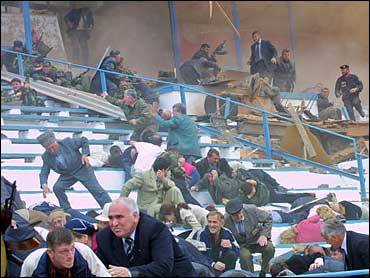
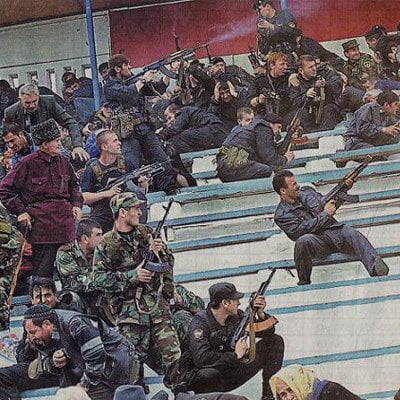

Chechen cleric and politician, 1st President of the Chechen Republic (b. 1951)
1 note
·
View note
Text
Russia. Chechen Republic. Lake Kezenoyam
Озеро Кезенойам
#2016#autumn#chechen republic#chechnya#lake#lake kezenoyam#mountains#november#russia#горы#кезенойам#ноябрь#озеро#осень#росс��я#чеченская республика#чечня#эйзенам#flickr#russian tumblr#русский tumblr
34 notes
·
View notes
Text
The Russian state using ethnic minorities as cannon fodder - with a focus on Buryats
Article written in 2022, update on the Free Buryatia Foundation in September 2023 given at the end of the post.

Putin announced on October 14th 2022 that by the end of October, his partial mobilisation process would be complete
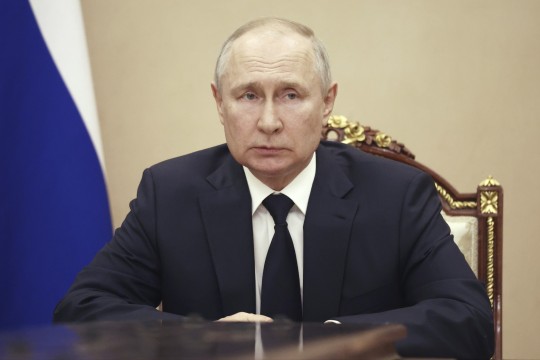
The recruitment target was 300,000. 222,000 were recruited, and it was claimed that there'd be no more plans for future recruitment
The mobilisation process soaked nation wide outrage which lead to mass protests.
It drew in criticism from some of the Russian political elite
The mobilisation process disproportionately affected ethnic minorities/impoverished regions (many impoverished regions have a high ethnic minority population)

Tuva Republic
Regions that held high populations of ethnic minorities bared the brunt of war-related deaths.
Both Ukrainian media and authorities have levelled accusations at Russian ethnic minorities - that they committed war crimes in Bucha, Ukraine
This accusations was made in May 2022 by Lydmyla Denisova, Ukrainian ombudsman for human rights

Buryats and Chechens were being accused of this
This was a form of scapegoating (not to say they 0 ethnic minorities have committed war crimes in Ukraine of course)
The Free Buryat Foundation investigated this and produced a report that challenged the notion that Buryats were ever sent to Bucha, let alone being responsible for the war crimes committed
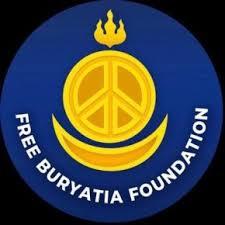
Victoria Maladaeva is the vice president of the Free Buryatia Foundation.

She said:
Dagestan, Tuva Republic and Buryatia Republic have the highest death tolls
Moscow, with 17 million, had >50 deaths.
Buryatia with only 980,000 had 364
A Buryat is 7.8 x more likely to die in the war compared to an ethnic Russian.
A Tuvan is 10.4x more likely
The biggest losses were at the beginning of the war and numbers gradually decreased.
Mobilisation was first and foremost carried out in ethnic republics
The day Putin announced this, authorities came to Buryatia at night, went into people's homes and took them from their beds.
No one was given draft notices
They even took men with multiple children, men from the same family
Endangered ethnic groups reside in Dagestan

There are very small communities of those people with populations of around 13,000
Despite this, those minorities were still drafted
There are also very small communities in the Sakha Republic.
They are so remote, helicopters are needed to be called for medical treatment
They almost never come because of how remote these communities are
Funnily enough, helicopters came immediately to draft those people upon Putin's announcement
Putin is a Russian imperialist through and through
None Russians are treated like second class citizens
Russian cultural chauvinism is seen even in small things - such as names
Putin would frequently mispronounce Kazakhstan's president's name. If you have an ethnic Buryat name for example, Russians are reluctant to use it, instead assigning you an "easier" Russian name

Kassym-Jomart Tokayev
Unfortunately, many of the people of Buryatia believe in the Russian narrative about Nazi ideology in Ukraine
It is one of the missions of the free Buryatia Foundation to help Buryats understand that this is Russian propaganda
The focus on Buryat/ethnic minority war crimes has a racial element
When an ethnic minority commits a war crime, their ethnicity is singled out
It should not matter the ethnicity of a war criminal
78 Buryat soldiers from the 11th air assault brigade were barred from terminating their contract
They were imprisoned in Luhansk.
Only Ilya Kaminskiy returned. The fate of the other men is unknown
The Free Buryatia Foundation knows they cannot help everyone but they do their best. They help people in terminating their contracts for example and have been quite successful in this.
The Free Buryatia Foundation was established to counter Russian propaganda and to protest the war.
People worldwide took an interest to this, so they founded the free Buryatia Foundation.
The Free Buryatia Foundation is the first ethnic anti war organisation in Russia
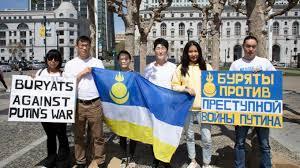
They aided in founding anti war organisations in other ethnic regions such as Tuva, Kalmykia, Udmurtia, Sakha
Many Buryats fled to Mongolia and Kazakhstan

Some men were able to come back after being drafted, some were not
The economic situation for Buryatia is dire. It ranked 81st out of 85 of Russia's regions when it came to living standards
Buryats had to spend money on a list of supplies for war that Russia did not provide them
Very recently, on September 1st, Russia banned the Free Buryatia Foundation, labelling them as undesirable and anti Russian.
Here is the website for the Free Buryatia Foundation:
And here is where you can donate:
Please spread around or give what you can.
#Russia#Russian imperialism#russian colonialism#russian invasion#Ukraine#invasion of ukraine#russian invasion of ukraine#war in ukraine#Buryatia#Tuva#chechnya#Sakha#Yakutia#Kalmykia#Indigenous people of Russia#Asian Russians#indigenous russia#indigenous russian#Native Russia#Native Russians#Russian ethnic groups#Free Buryatia foundation#Free Buryatia#Anti Russia#Russian propaganda#human rights#Russian ethnic minorities
147 notes
·
View notes
Text
"The stealing of Ukrainian children by Russians and their russification reminds me of how Russian nobility "established guardianship" over kids during Wars in Caucasus (18-20th centuries), after they had murdered all their relatives in their homes and on their land, taking the kids away, stripping them of their language and culture.
There's a lingering feeling that this is all - one long, long colonial war with no end in sight. A war that will be our doom. For the enemy is just too strong, the forces are too unequal. But now there is also hope. A hope for freedom. The name of this hope is Ukraine."
- writes a Chechen woman.


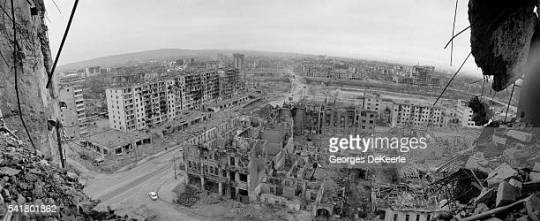
— Grozny, the capital of the Chechen Republic of Ichkeria, after Russian "liberation" in 2000.
More images:
577 notes
·
View notes
Text
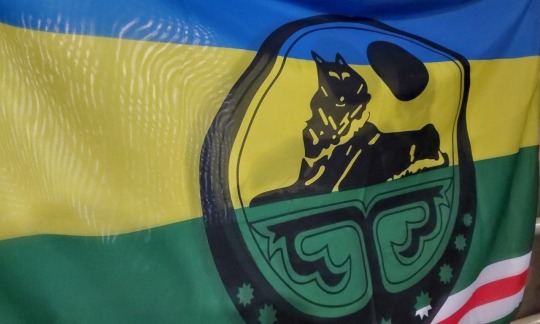


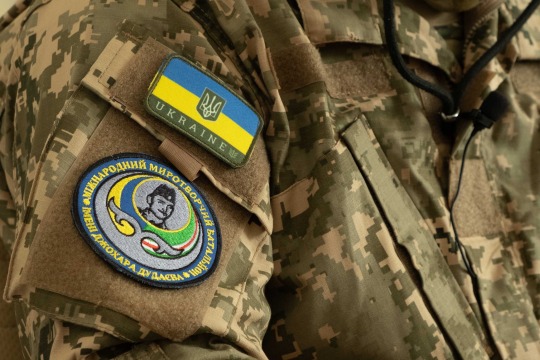

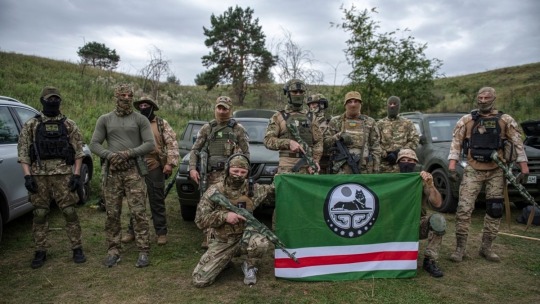
"Russia will fall when Ukrainian sun rises" said the first President of the Chechen Republic of Ichkeria, Dzhokhar Dudayev born on this day 79 years ago.
Ukraine became the first UN country to recognise the independence of Ichkeria on October 18 last year but the close relationship between the two peoples date back. There are stories of Ichkerians saving Ukrainian people from prosecution of the USSR government by hiding them in the mountains. Ukrainians were also one of the only nations to help Ichkerians in the two Chechen Wars waged by russia, reportedly operating one of the few tanks in disposal of the Ichkerian Armed Forced lead by Dudayev.
In 2014 after russia annexed Crimea and started active warfare in the East of Ukraine, the Free Caucasus organisation based in Denmark, where large numbers of Ichkerians have fled to after the Second Chechen War, formed an the International Peacekeeping Battalion named after Dzhokhar Dudayev. Ichkerians have been at the frontlines of the russian-Ukrainian war ever since. From November 2022 they have been operating in Bakhmut, the deadliest battles now are happening there.
За нашу і вашу свободу | "For your and our freedom"
299 notes
·
View notes
Text
Muslim pupils who expressed outrage after their teacher presented a Renaissance painting of nude women in class will be disciplined, France’s education minister has said.
A French teacher at the multicultural Jacques-Cartier college showed students the painting Diana and Actaeon by the Italian artist Giuseppe Cesari, which portrays a Greek mythology story in which the hunter Actaeon sees the goddess Diana and her nymphs bathing.
The work, which depicts a naked Diana and four female companions, is held at the Louvre museum in Paris.
Sophie Vénétitay, secretary general of the Snes-FSU secondary school teachers’ union, said: “During a French class, a colleague showed a 17th-century painting that showed naked women.”
“Some students averted their gaze, felt offended, said they were shocked,” said Ms Vénétitay, adding that “some also alleged the teacher made racist comments” during a class discussion.
A pupil’s parent sent an email to the school director saying that his son was prevented from speaking during that discussion and that he would file a complaint.
“We know well that methods like that can lead to a tragedy,” Ms Vénétitay told BFMTV news. “We saw it in the murder of Samuel Paty. Our colleagues feel threatened and in danger.”
Teachers at the Issou school said that pupils admitted lying about events in their art class but that the damage had been done.
“We’re dealing with vindictive parents who prefer to believe their children than us,” they said.
Gabriel Attal, the education minister, visited the school in person on Monday and later said that a disciplinary procedure would be launched “against the students who are responsible for this situation and who have also admitted the facts”.
A team would also be deployed to the school to ensure it adhered to the “values of the republic”, he said.
Staff at the Jacques-Cartier middle school in Issou, west of Paris, refused to work on Monday, saying they feared for their safety given the recent murders of two teachers by jihadi terrorists.
Dominique Bernard was stabbed to death by a Muslim man in his school’s playground in the northern town of Arras in October.
In 2020 a civics teacher, Samuel Paty was stabbed and beheaded by a terrorist in Conflans-Sainte-Honorine, 12 miles from Issou, after he showed his pupils a caricature of Mohammed in a class on free speech.
In an email sent to parents on Friday, teachers said they were exercising their right to stay away from classrooms over the “particularly difficult situation” and “an increase in cases of violence” as their daily reality.
Deteriorating discipline at the school
The school’s head teacher recently asked the education ministry for more staff and resources to deal with deteriorating discipline at the school, saying that fights and death threats and threats of rape had become common among pupils.
“We feel we are clearly in danger. We are supported by our direct superiors but not from higher up. This is a real call for help,” said one teacher.
Last week a Paris court convicted six teenagers over their role in events that led to the beheading of Mr Paty, who was their teacher at the middle school in Conflans when he was killed by Abdoullakh Anzorov, an 18-year-old of Chechen origin.
In another sign of school-religion tensions, the state this week said it would withdraw funding for the country’s biggest state-subsidised Muslim high school. In its teaching of Muslim ethics, the Averroes school, in Lille, was found to be violating French republican values.
On Tuesday, Jordan Bardella, leader of the hard-Right National Rally party, warned that “freedom of expression is under threat in France from an all-conquering political Islam that is imposing on our society its laws, its way of life and its prohibitions”.
39 notes
·
View notes
Text


Bullet train oc Errand Boy゚+.ヽ(≧▽≦)ノ.+゚ He is NOT welcome in Kazakhstan or Russia or Chechen Republic or USA or
43 notes
·
View notes
Text
War In Chechnya Chechen Republic
Times goes on, orcs don't change,methods never change.
russia the state of liars, looters,killers
#ukraine#war in ukraine#chechen#chechen war#methods of russia#stop russia#stop genocide#war in chechen republic#russian invasion#russia terrorist state
31 notes
·
View notes
Text
Jewish cultural center in Nalchik city of Kabardino-Balkaria Republic in Caucasus region in Russia was burned. They wrote "Death to yahuds" on the buildings. In Khasavyurt, Republic of Dagestan, Russia, a crowd of people stormed a hotel because someone in Telegram claimed that there are "refugees from Israel" in this hotel. In Makhachkala, Chechen Republic, Russia, a crowd stormed the airport expecting a flight from Tel-Aviv and checking all the exiting cars including police cars to see if there are any Jews hiding inside.
So, maybe if you want Jewish people in Israel to go back to where they came from or stay in their countries, maybe this isn't something you should do?

47 notes
·
View notes
Text
The Execution of Tatiana Usmanova:

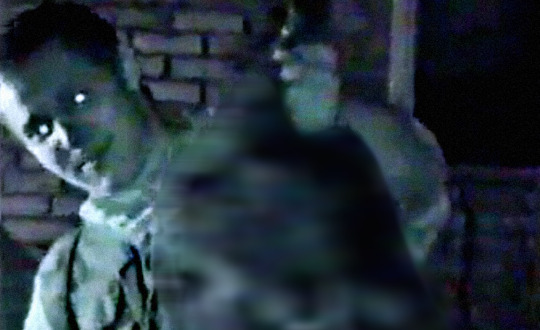
The Chechen Wars were a string of vicious conflicts between the Russian Federation and the Chechen Republic of Ichkeria. These brutal onslaughts transpired in two stages, from 1994 to 1996 (The First Chechen War) and 1999 to 2009 (The Second Chechen War), producing devastating consequences for the Russian Federation and the Chechen Republic of Ichkeria in terms of significant human suffering, including military and civilian casualties, civilian displacement, and eradicated infrastructure. From 1994 to 2003, as many as 50,000 to 250,000 civilians were killed in the combined Chechen wars, along with thousands more deaths of fighters from both sides.
The spread of technology during the Chechen wars allowed for the filming of various war crimes, and it became a breeding ground for atrocious propaganda footage, mainly by the Chechen rebels. These guerilla warfare-styled fighters employed psychological warfare to strike fear into the hearts of the Russians. One of the tactics they would utilize is recording the executions of captured Russian troops, then leaving the videotape on the body for the enemy to discover. A few of these videos were eventually uploaded on popular snuff hubs like Documenting Reality or Rotten and are considered the original gore videos available to watch online. One such video was the recorded murder of Tatiana Usmanova, which had vanished for some time before emerging on the internet once again.
32-year-old Tatiana Usmanova and her husband, Hassan Edilgireev, lived in the Adreevskaya Dolina village in the Zavodsky district of Grozny. On the evening of October 1st, 2001, Tatiana, Hassan, and her friend, Elena Petrovna Gaevskaya (reportedly paying a visit to the couple), were abducted by five pro-Chechan militants from their home. According to sources, the Chechen militants accused Tatiana of collaborating with local police or other agencies. Tatiana was murdered on camera in front of Hassan, while Elena was shot to death off camera. Hassan was tortured by the rebels; however, they allowed him to live because he was of Chechen descent. All of the killers, except for the cameraman, were around 18 years of age. Tatiana's execution footage was not released to the public until 2004, after the Grozny police obtained the tape, initiating a separate investigation into who was responsible for Tatiana's murder. While everyone who participated was eventually identified, most were already dead.
The killers were identified as:
Islam Chalayev: Killed during an FSB mission in April 2002
Khamzat Tazabaev: Killed during an FSB mission in February 2004
Adlan Barayev: Killed during a special operation in 2004
Arbi Khaskhanov: Official status is unknown (may still be alive)
Ilyas Dashaev: Already serving time in prison for past crimes
Sources cite that Ilyas Dashaev was part of the group led by Arbi Barayev, a Chechen warlord who had been explicitly selecting young and ruthless men to join. Dashaev then moved to a different group led by Islam Chalayev at the beginning of 2001. In January 2002, federal troops launched an operation against Dashaev and detained him. By December of that year, the Stavropol Regional Court found him guilty of murdering the heads of administrations for several Chechen villages, and two employees of the Urus-Martanovsky District Department of Internal Affairs, as well as banditry and robbery, earning him a sentence of 20 years in a maximum security penal colony. Finally, in 2007, Ilyas Dashaev was convicted by the Supreme Court of the Chechen Republic of the 2001 murders of Tatiana Usmanova and Elena Petrovna Gaevskaya and was sentenced to an additional 22 years. According to Dashnaev's court testimony, he confessed to brutalizing Tatiana and Elena for talking to authorities and dumping their bodies into a river.
Tatiana's Execution Video:
The footage of Tatiana's execution is 17 minutes and 55 seconds long, and it appears the cameraman recorded with a night vision filter inside a dark basement. Upon starting the video, you see a beaten Tatiana sitting on the dirt floor alongside Hassan, and she's interrogated for the first two minutes, occasionally being hit with a flexible rod. Despite the abuse, Tatiana appeared remarkably composed during the interrogation by the rebels.
From 2:30 to 3:50, one of the captors is seen digging a shallow pit for blood to flow in. The camera interchangeably zooms on Tatiana, and the expression on her face is of pure despondency as it seems there is no way out for her. Around 4:58, she began to panic, pleading for her life while they bound her hands together with tape. The video then cuts to Hassan having tape placed over his mouth before shifting back to Tatiana, who is on the ground with her mouth taped.
One of the rebels presses a combat knife onto her throat, not cutting it, but to practice where to cut. At 6:25, one of the rebels cuts the tape off Tatiana's mouth, and she begins murmuring to them, but what was said is not known. From 8:30 to 9:20, Tatiana has her mouth taped again as the rebels prepare for the killing.
By 9:20, the militants place Tatiana on her side by the hole. One holds her head back to expose her neck, while the other begins to sever her throat. A faint squeal leaves Tatiana's mouth as her throat is carved wide open, and her blood is seen streaming into the hole. The killers also took turns lacerating and holding her down against the dirt until she's finally decapitated. At 9:49, the footage cuts to a black screen, but you can hear the rebels talk amongst each other for about a minute or so before it cuts to Hassan at 11:06.
Hassan's head was covered in lumps and lacerations, indicating that the killers badly beat him. At 11:26, the cameraman walks around Tatiana's beheaded corpse as he laughs. One of the killers can be seen at 12:04 boasting with Tatiana's head in his hand before placing it on the floor. The remaining minutes of the footage show the killers probing Hassan, who appears to be in shock due to what he had witnessed happen to his wife, and then the video concludes.
#tatiana usmanova#chechen wars#morbid curiosities#true crime#true crime research#true crime community#beheaded#execution#second chechen war#wrathzy
64 notes
·
View notes

